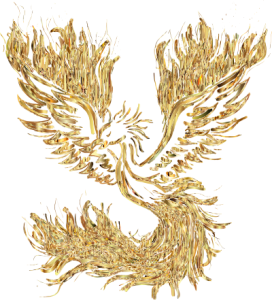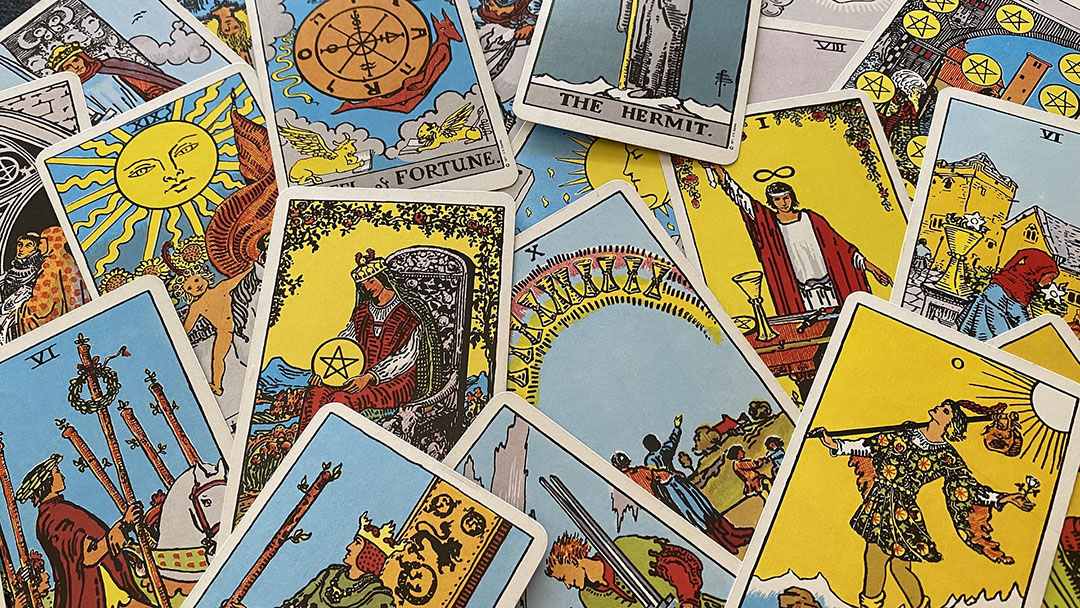The archetypal symbols depicted on tarot cards have fascinated us for centuries. As unlikely as it may sound, tarot cards and psychology can work together beautifully to help people access their unconscious by evoking deep insights. Carl Jung’s associate Marie-Louise von Franz revealed that Jung used tarot cards in his practice as a means of helping his clients connect to the archetypes and symbols that held resonance for them (2001.) When not used as a means of divination the images on the tarot cards can enable us to access the wisdom of our unconscious that can be successfully applied to real-life issues.
This is a technique for using tarot cards that can help you to see your way toward your goals. There is no divination involved. You don’t have to know what each card means. (In fact, it is best to not look at the book that comes with the deck.) You can simply look at the images on the cards to determine what they mean to you.
(1)
Select a deck of tarot cards whose images are accessible and appeal to you. The Gaian Tarot of Joanna Powell Colbert (available on Amazon) has images of contemporary, everyday people which are beautiful and relatable. I always recommend it, but there is a wealth of exquisite decks to choose from. Select the one that speaks to you.
(2)
Divide the deck into the Major Arcana and Minor Arcana and separate them from one another.
(3)
Using the Major Arcana only select a card whose images best illustrate what your goal is. This goal can be a career change, developing a talent, or who you’d like to become as a person. The only caveats are that (A) it is something that you yourself can accomplish without dependence on the actions of others, and (B) it is something that is realistically doable. Pull that card out and lay it down face up.
(4)
Divide the Minor Arcana into its 4 separate suits. Each suit represents a different element or Jungian psychological function as follows:
- Wands/Fire/Intuition
- Pentacles/Earth/Sensation-Material Awareness
- Cups/Water/Feeling
- Swords/Air/Thinking
(5)
Pull a card from each suit appropriate to the following questions:
- Wands – what is my gut instinct telling me about how to proceed with this?
- Pentacles – what are the material (e.g. financial) circumstances surrounding this?
- Cups – what feelings does achieving this goal evoke?
- Swords – what do I think is the way to proceed with reaching this goal?
Lay each card down to the right of the Goal Card face up.
(6)
Using the entire deck, select a card that best represents any limiting belief about your ability to achieve your goal. Lay that card face up at the far right of the spread.
(7)
Write down what each card is saying to you based purely on the images you see. What springs out at you? What difficulties do you see? What feels “right” to you? Each image in each card is a symbol of something. Look at each card carefully. What do the images symbolize? Where are hidden helpers, benefits, pitfalls? What is the best way to proceed?
(8)
Construct a “big picture” of your goal and what you need to do to achieve it.
(9)
Everything is fluid and it’s all a process of becoming. Keep checking in with the spread. If something changes (and it will) simply choose a card to replace the obsolete image from the same Arcana and suit.
I’ve used versions of this method of meaning-making with clients and students over the years with excellent results. This method creates a pathway of communication between the conscious and unconscious resulting in a more complete analysis of your goals thus helping you to refine and focus your energy and intent.

